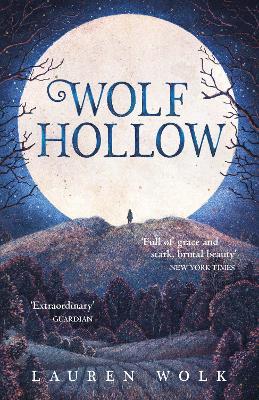
Briana @ Pages Unbound
Written on Feb 28, 2017
The setting of Wolf Hollow is definitely one of its strong points. I found it fascinating to read about a place that, technically, is the middle of the 1940s, but because of it's rural location often looks like something out of an L.M. Montgomery novel (late 1800s/early 1900s). While the characters have electricity and other conveniences we would recognize today, the children still attend school in a one-room schoolhouse and seem primarily invested in playing and helping out on the family farm. I also was intrigued by how the ongoing war seemed both present and absent in the novel, something Annabelle is aware of but isn't directly affected by.
The characters are interesting and sharply drawn. I felt like most of them are round, and most are willing to change their habits or opinions when new information presented itself; they have recognizable characteristics, but they never get into a rut. Protagonist Annabelle is spunky and brave, even when she is sure she is not, and her friendship with Toby is one of the highlights of the novel. Her family, schoolmates, and neighbors, all come equally to life, however.
I have seen numerous comparisons to To Kill a Mockingbird, and while I agree the themes of othering and judgement are similar, this is a hard sell for me because To Kill a Mockingbird just seems like a better book. It's well-written, in prose and structure, and it treats its themes with an amazing blend of empathy, complexity, and subtlety. Wolf Hollow has solid prose, so no complaints there, but the treatment of tough, complicated themes simply isn't on the same level. The narration often states things explicitly in the sense of "People don't trust citizens of German heritage because the US is at war with Germany," but without any real delving into the issue. In fact, I think this book in large part about bullying more than it is about some of the more political themes it alludes to, ones relating to the current World War II and ones related to the aftermath of World War I. Those things are there, but the narrative is so very much on the new girl at school being a jerk and a bully to everyone around her, with or without motivation.
Other readers have commented on how dark the book is, and I grant that (even as I'm arguing that it seems to skirt some of the darkest issues). I disagree, however, with assertions that this necessarily means the book is not appropriate for children or is somehow not "really" a middle grade book. It is, indeed, different from much of the middle grade on the market--but I think that's a feature, not a flaw. Readers don't want books to seem factory produced, to feel that there's only one aesthetic for a middle grade book. Certainly, if you're considering giving this book to a child, take into account their individual ability to read about dark topics and depressing events. Not all the loose ends tie up nice and rosy here. But I think this is very much a middle grade book that will find middle school age readers.

